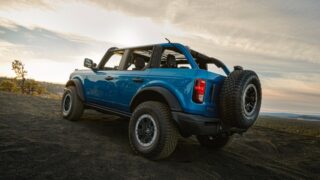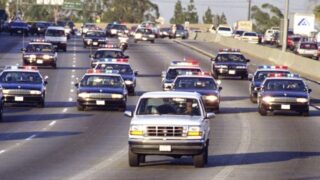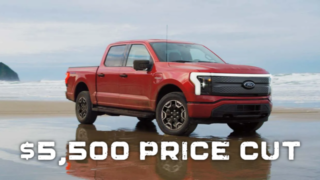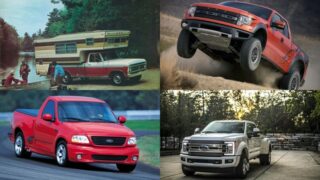Front Suspension Alternatives for 1948 – 1960 Ford Trucks, Part Two
Mustang II IFS
Overview
This chapter looks at the alternative that uses the IFS components from ’74 – ’80 Mustang II and Pintos. This set up is arguably the most popular and unquestionably the most supported alternative by the after market. Advertisements in classic truck and street rod magazines are more plentiful than those hateful subscription cards that fall out every time you pick them up.
To clarify, the basic set up consists of using the A-arms, steering rack, spindles and brakes together with an after market cross member. Fancier versions of the kit are available up to the point where almost no donor car components are used – everything is supplied either refurbished or remanufactured. The basic kit (cross member only) starts around $350 and run up to a full-blown, self-contained assembly at around $2,700.
Characteristics –
- Reasonable supply of Mustang II/Pinto donors out there.
- Easily upgradeable brakes through the after market from mild to wild.
- Very clean look.
- Huge after market support means components should be available for a long time to come.
- Front steer system for better steering.
- Available with manual or power steering – both are rack and pinion.
- Compact design for extra clearance under chassis for engines and headers
- Huge level of installed base and installation support. You’re not navigating uncharted waters.
- It is 100% Ford.
- If you’re a good scrounger and welder, it can be done fairly cheaply.
- Gives a reasonable lowering of front end safely.
- Good ride and handling.
- With the use of coil overs, comes ease of ride height adjustability. A simple turn of the spring/shock nut and you can change the ride height 4 to 5 inches.
- Ease of changing springs. Take out upper shock bolt and a pin and you can have a spring changed in a couple of minutes. Cushy ride or you’re sporting a 302? –put in the light springs. Going racing or you’ve got the 460, install the heavy springs
Important considerations
- There have been documented failures of after market cross members. While there are a plethora of kit manufacturers, some kits are better than others. Thorough research of cross member vendors is necessary. Not all kits are created equal. Do your homework before you buy. Get feedback on any of the numerous forums to ensure you know whose kits are good and whose are not. (See note below)
- In the rust belt especially, donors can be harder to find. This is due to the sheer demand for the components from others before you. After market copies are easily obtainable however.
- The stock 9" brakes are not sufficient for our application. You need to upgrade. On the plus side, mid-sized GM rotors from ’68-’72 bolt on to the stock spindles if you use the GM bearings and races, so you can easily match the 4 3/4 bolt pattern of a GM rear end (if you have chosen to go that route) and they give you 11-inch brake rotors for very good stopping, so you don’t have to spend a fortune.
- Some kits require additional gusseting for strength if you are using tubular control arms and no strut rods.
- You have to experiment with coil springs to get the correct ride height and comfortable ride. Although, the newer setups with coil over shocks seem to take some of the guesswork out.
- Some folks like to eliminate the "ugly" strut rods. You can run them without them and be completely safe…with the proper upgrade/modifications. There are also design problems with the strut rods that cause some binding in the suspension travel if they aren’t done properly.
- You need to be a competent welder. If you’re not, find one. Lives depend upon it. This is the case with any other alternative except perhaps the Cordoba set up, as it is a bolt in.
- A front sway bar is highly recommended, although this holds true for all of the alternatives.
- There is a considerable weight difference between an F-1/F-100 and a stock Mustang II or Pinto. The better kits compensate for this. The stock Ford cross member does not. You do not want to simply cut and stretch the original Ford cross member.
NOTE – While there have been (approximately five) failures documented on this and other forums, the actual cause of said failures have not been properly or fully determined. They could be due to inferior components, poor installation, severe use or who knows?
Installation overview
Based upon using the Heidt’s Economy Cross Member. You could probably do this install with the front sheet metal in place, but it would be more difficult and time consuming.
Remove the front sheet metal. (It will come off as a unit with a dozen bolts and three helpers.)
Set the truck up on sturdy jack stands and level the frame front to rear and side to side.
Remove all the stock suspension and steering components… spring mounts, shock mounts, steering box, etc. You should have a pair of clean, clear frame rails for a starting point.
Boxing the rails is next. Make sure the rails are flat and straight.. A little grinding goes a long way here.. Don’t remove a lot of material. Box from rear of front cross member to just ahead of the cab mounts. You can do with less, but it dresses the rails out nicely. After cutting out your boxing plates and grinding to fit, tack them in place. Grind to fit inside and flush to the frame rail or you can box to fit against the rail. The welds are a little easier to dress when the plate is inside. Move around with your welding to minimize warping and heat… Grind smooth when welding is complete.
The cross member (axle) center line is set by measuring 19-3/4" from the center of the front shackle hole in the frame (Heidt’s kit…others may vary). Scribe a line around the rail… top, bottom and side.
Mark the centerline of the cross member and trial fit the cross member under the frame rails, centering it on the scribed line. A little grinding might be necessary for a good fit. Tack it in place and check your measurements (twice!). When happy, you can apply full welds around both ends, top, sides and underside. Make sure all meeting surfaces (frame to cross member) are welded. Again, move around while welding to limit heat build up and distortion.
Next, locate the spring towers as described in your installation information. For Heidt’s they are 1-3/4" forward of the cross member with the narrowest end toward the back.
If you’re using strut rods and stock lower control arms, mount the lower arms to the cross member and use them to locate the strut rod plates for welding to the frame.
Assemble the suspension parts and you’re done…
Alignment is critical for proper operation and tire longevity. Caster 7/8° +/- �°
Camber �° +/- �° and toe-in 1/8" +/- 1/8". These are Heidt’s recommendations.
Attaching all suspension parts… 2 hours… which includes trips to the parts store to swap bearings or pads.
Fabrication and installation of modifications to strengthen lower control arms and cross member … 1 month (included in that are 28 days of figuring out what to do… actual fabrication/weld time 8 hours). (This was done to try to avoid any risk or suspension failure as mentioned above)
Skill level – 3
Ride Height – A drop of 3" to 5" versus stock is normal




